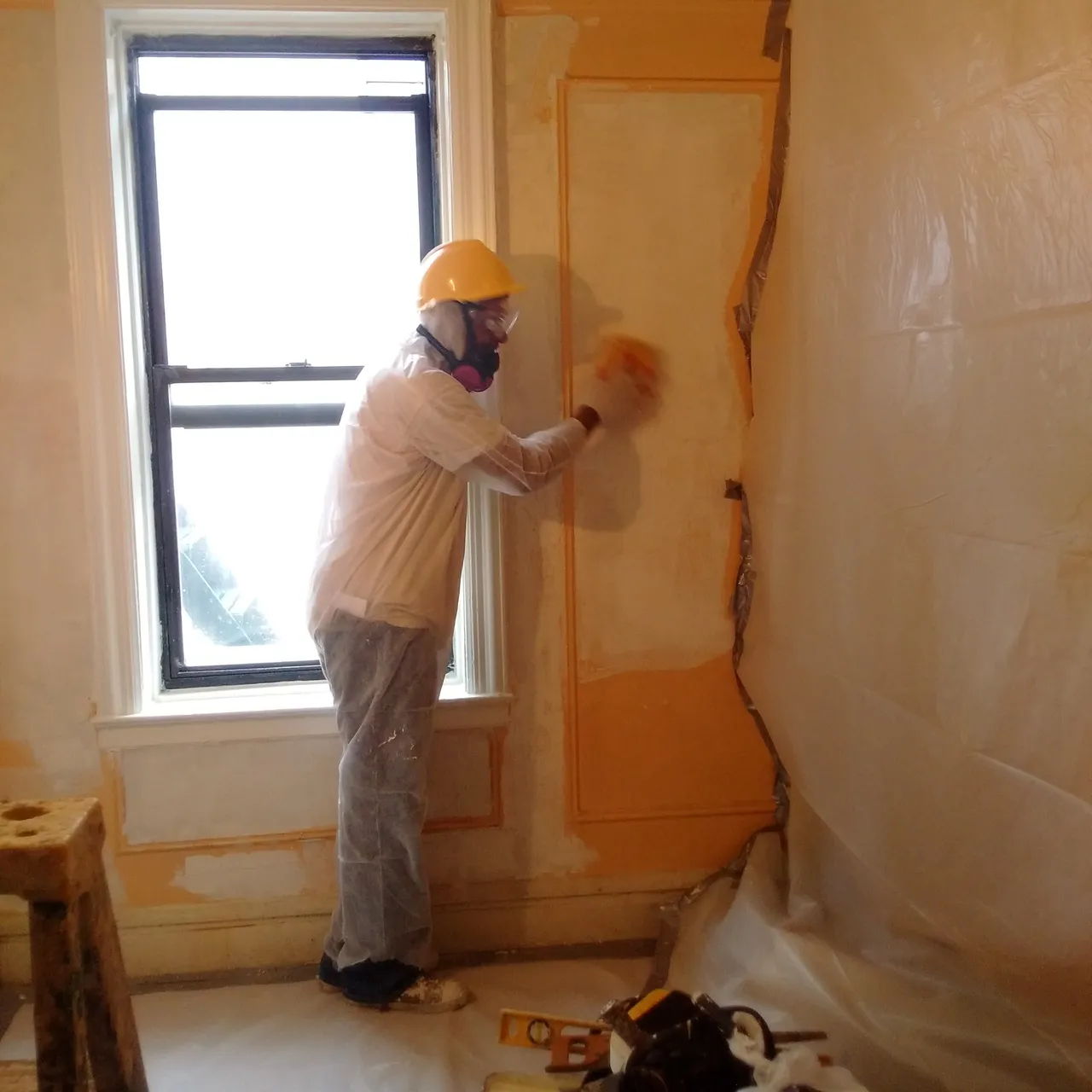DOH & HPD Lead Violation Removal NYC-- Specialist Solutions for Conformity
DOH & HPD Lead Violation Removal NYC-- Specialist Solutions for Conformity
Blog Article
Best Practices for Making Certain Safe and Complete Lead Infraction Reduction
Addressing lead offense abatement requires a multi-faceted strategy to make sure both safety and compliance. It's the last clearance procedure, including comprehensive evaluations and laboratory testing, that truly confirms a lead-free environment, ensuring lasting safety and security. Exactly how do these methods adjoin to ensure extensive lead abatement?

Preliminary Assessment
Performing an initial assessment is a vital first step in lead violation abatement. This stage includes a detailed analysis of the residential property to determine the visibility, degree, and specific areas of lead-based risks. Certified professionals, such as licensed lead assessors or run the risk of assessors, need to carry out a detailed website assessment, making use of tools like X-ray fluorescence (XRF) analyzers to precisely detect and determine lead concentrations in paint, dust, dirt, and water.
The assessment has to additionally consist of an evaluation of the building's history, previous reports, and any type of complaints or health concerns reported by occupants - Lead Removal Contractors. Recording the findings diligently is important, as these documents create the basis for creating an efficient abatement technique. A thorough evaluation also includes sampling and lab evaluation, which are essential to verify the presence of lead and guide subsequent actions
Furthermore, it is critical to interact the outcomes transparently to all stakeholders, consisting of residential or commercial property owners, renters, and regulative authorities. By guaranteeing that the preliminary assessment is performed with precision and rigor, specialists can lay a strong foundation for a targeted and efficient lead abatement process, ultimately safeguarding public health and making certain compliance with regulatory requirements.
Correct Control
Correct control is important to stop the spread of lead contaminants during abatement tasks. Successfully handling control lessens the danger of lead dust and debris migrating to non-work areas, thus protecting both the setting and people outside the immediate work zone.

Regular evaluations of the control area are essential to inspect for breaches or weak points in the barrier. Any identified issues need to be quickly dealt with to maintain the stability of the control. By sticking to these practices, reduction tasks can effectively manage lead contamination and reduce associated health risks.
Worker Defense
Making certain employee security is extremely important throughout lead abatement projects to stop job-related exposure to harmful lead bits. Crucial steps consist of the usage of individual safety equipment (PPE) such as respirators, gloves, and full-body fits official source particularly developed to obstruct lead dirt and fumes. Employees should undertake detailed training on the right usage and upkeep of PPE, including healthy testing for respirators to ensure maximum efficiency.
Engineering controls, such as neighborhood exhaust air flow systems, are vital in lessening airborne lead concentrations in the job setting. Administrative controls should likewise be applied, consisting of limiting the period of direct exposure and rotating employees to decrease specific exposure times. Routine clinical surveillance and biological monitoring are crucial for very early detection of lead absorption, allowing prompt treatment and treatment.
Additionally, establishing a decontamination protocol is important. Workers need to comply with rigid decontamination procedures prior to breaks and at the end of their shift to prevent lead dust from being brought outside the work area. This includes thorough hand and face washing with lead-specific cleaner and changing out of polluted clothing.
Careful Clean-up
Maintaining a secure workplace extends past worker defense and incorporates careful cleaning to make certain lead fragments are completely removed from the site. The process of meticulous cleanup is critical in protecting against the recontamination of the abated location and protecting both present and future occupants.
To attain a detailed clean-up, all work areas have to be methodically sanitized. This involves using specialized HEPA (High-Efficiency Particulate Air) vacuum cleansers and wet-wiping strategies to investigate this site record and remove fine lead dust that may have chosen surface areas. It is crucial to clean all horizontal surfaces, including floorings, window sills, and countertops, as well as vertical surface areas that might have trapped lead bits.
Employees must use ideal personal protective tools (PPE) throughout cleanup to avoid exposure to residual lead dust. Used cleaning products such as wipes, sponges, and wipe heads need to be thrown away in conformity with unsafe waste disposal laws.

Last Clearance
Last clearance is the essential ending stage of lead reduction that establishes whether the website is secure for reoccupation. This crucial step entails comprehensive examination and screening to validate that all lead risks have been efficiently eliminated. The process begins with an aesthetic assessment by a licensed lead-based paint examiner or danger assessor to make sure no noticeable dust or particles continues to be. This is followed by gathering dirt clean examples from various surfaces, consisting of floors, windowsills, and various other straight look at this website surfaces. Lead Removal Contractors.

Last clearance screening not just shields future passengers however likewise ensures compliance with neighborhood, state, and federal guidelines. In addition, it works as a recorded recognition of the reduction professional's adherence to sector best methods. Making sure a complete and successful final clearance is necessary in guarding public wellness and promoting count on in the abatement process.
Final Thought
Ensuring risk-free and comprehensive lead violation reduction requires a multifaceted strategy incorporating first evaluations with innovative discovery methods, efficient containment approaches, stringent worker security methods, and careful cleanup procedures. The final clearance phase, including in-depth inspections and laboratory testing, is critical to verify conformity with EPA requirements. Adherence to these best practices assures a safe setting for residents, minimizes health dangers, and supports regulative needs, therefore advertising public health and security in lead-affected locations.
Report this page